Waterfowl and Waterbirds
A Model Conservation Success Story
Status: Decades of population growth driven by conservation policy and cleaner water
The long-term recovery of waterfowl and waterbird populations is largely due to successful policy (such as the North American Wetlands Conservation Act and U.S. Farm Bill conservation programs), along with coordinated efforts by public-private partnerships under the North American Waterfowl Management Plan.
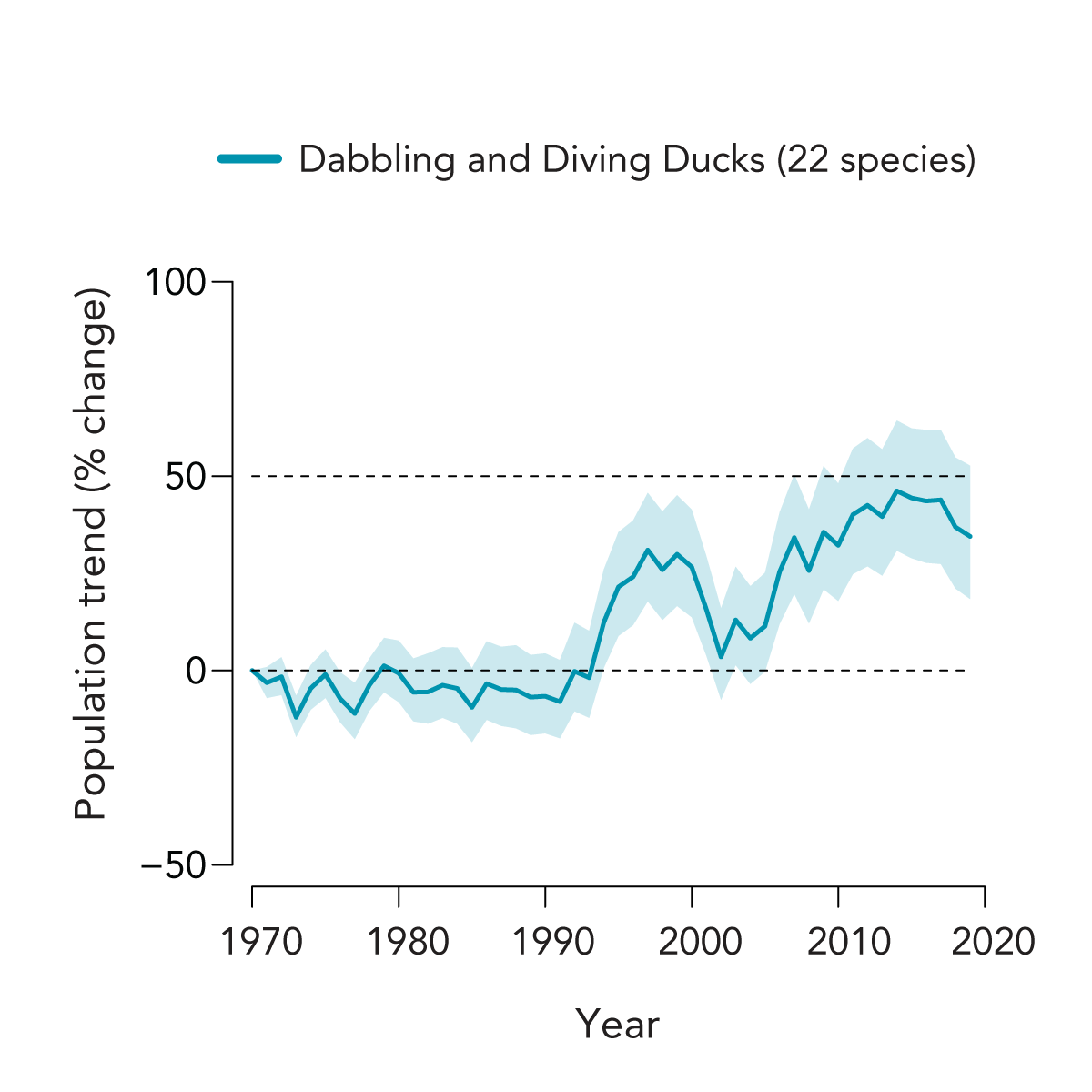
Dabbling and Diving Ducks
Despite their decades-long gains, ducks continue to face pressures from grassland habitat loss, wetland drainage, coastal wetland loss, and climate change impacts. Recent droughts have tipped duck populations downward—underscoring the need for continued conservation investments to keep duck populations healthy and resilient.
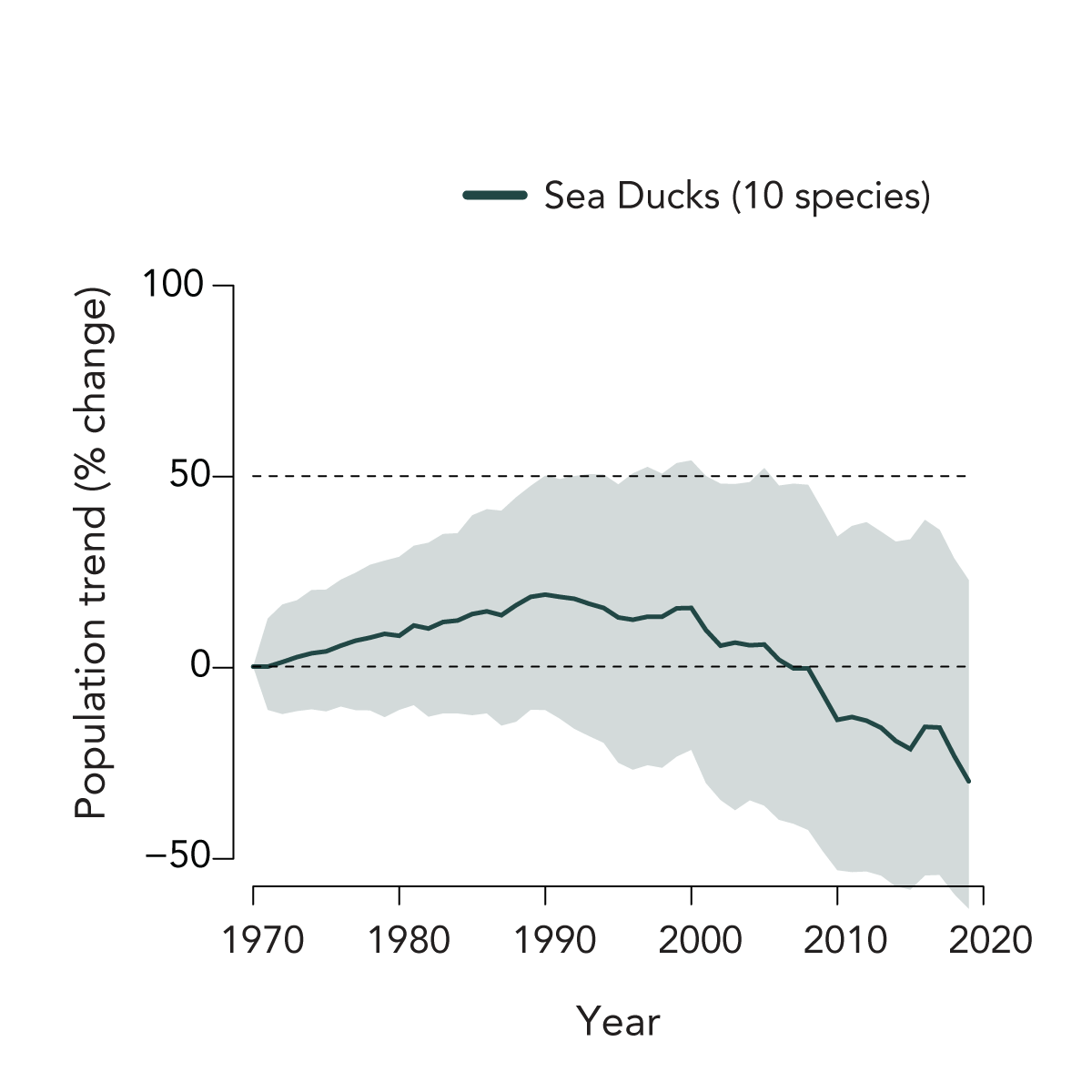
Sea Ducks
Sea ducks face elevated threats from climate change, including effects on food resources, altered predator communities, and rapid changes to breeding habitats. Strategic solutions will be needed to reverse declining trends for species that have not yet responded to large-scale conservation efforts.

Geese and Swans
Goose populations are near historic highs, largely due to successful adaptation to agricultural and urban landscapes. Yet some populations of Arctic and sub-Arctic nesting geese (such as Lesser Snow Goose) are being impacted by climate change and shifting environmental conditions.
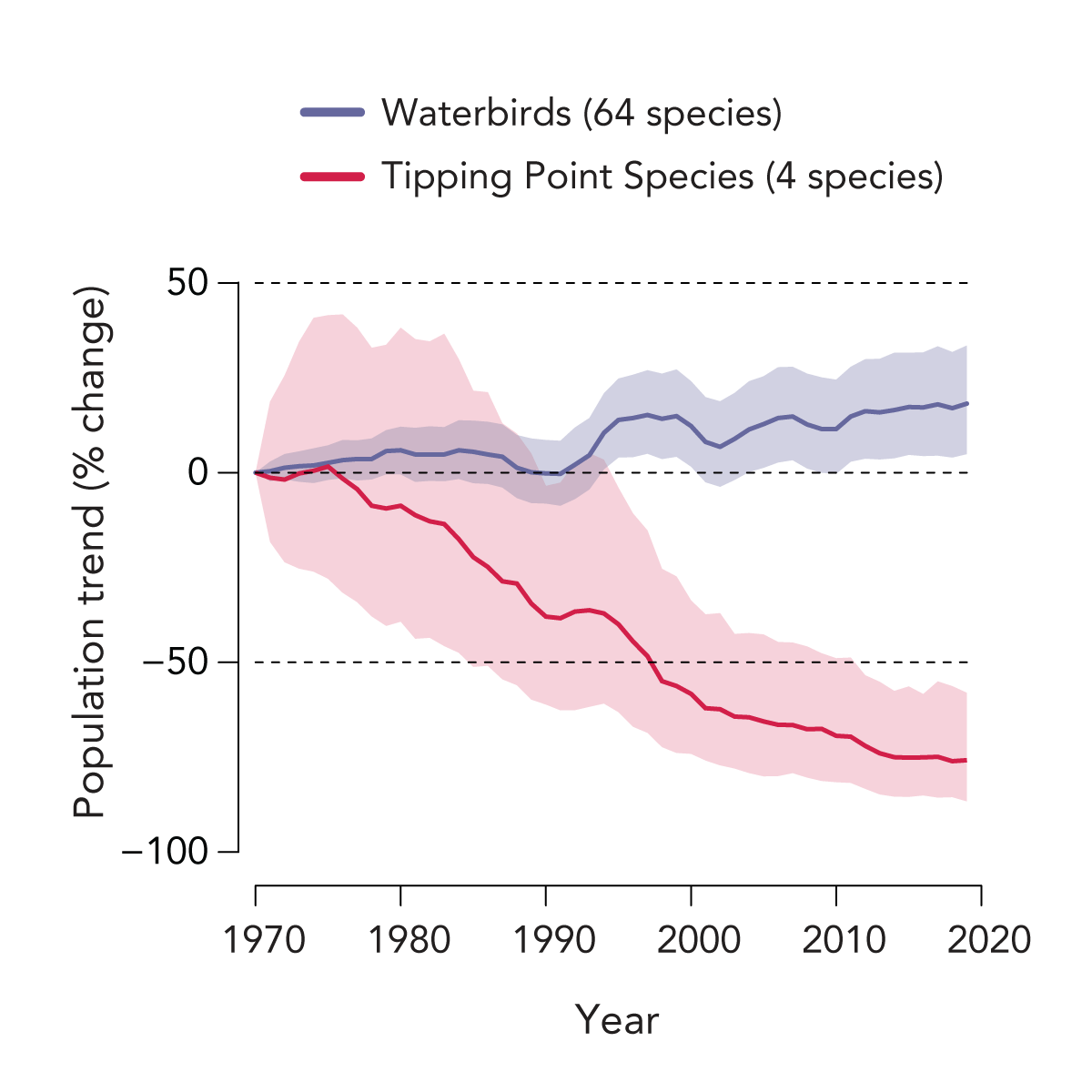
Waterbirds
Populations of some fish-eating waterbirds such as pelicans have increased greatly in recent decades, signaling an improvement in water quality. But nearly a third of waterbirds show declines, including several heron and rail species that rely on marshes and ephemeral wetlands.
Recent Drought Emphasizes the Need to Protect Wetland Basins and Water Supplies
In recent years, extreme and widespread drought has affected many populations of waterfowl and wetland birds in areas where they were previously flourishing. Although many bird species have evolved strategies to withstand short-term droughts, climate projections are for drought to become more severe and frequent. Recent years of extreme drought offer a glimpse at a drier future and highlight the need for more robust and resilient water supplies.
The 2021–22 drought impacted some of North America’s most important waterfowl breeding and migratory habitats.

Prairie Pothole Region
The Prairie Pothole Region supports up to 50% of North America’s breeding duck populations, but it’s a fragile landscape that has suffered extensive grassland and wetland loss over the past century.
Recently a multiyear drought in the West caused the drying of shallow wetlands and amplified the importance of large-scale conservation to build landscape resilience. Future conservation efforts must continue to emphasize the protection and restoration of wetland basins and expansive grasslands.
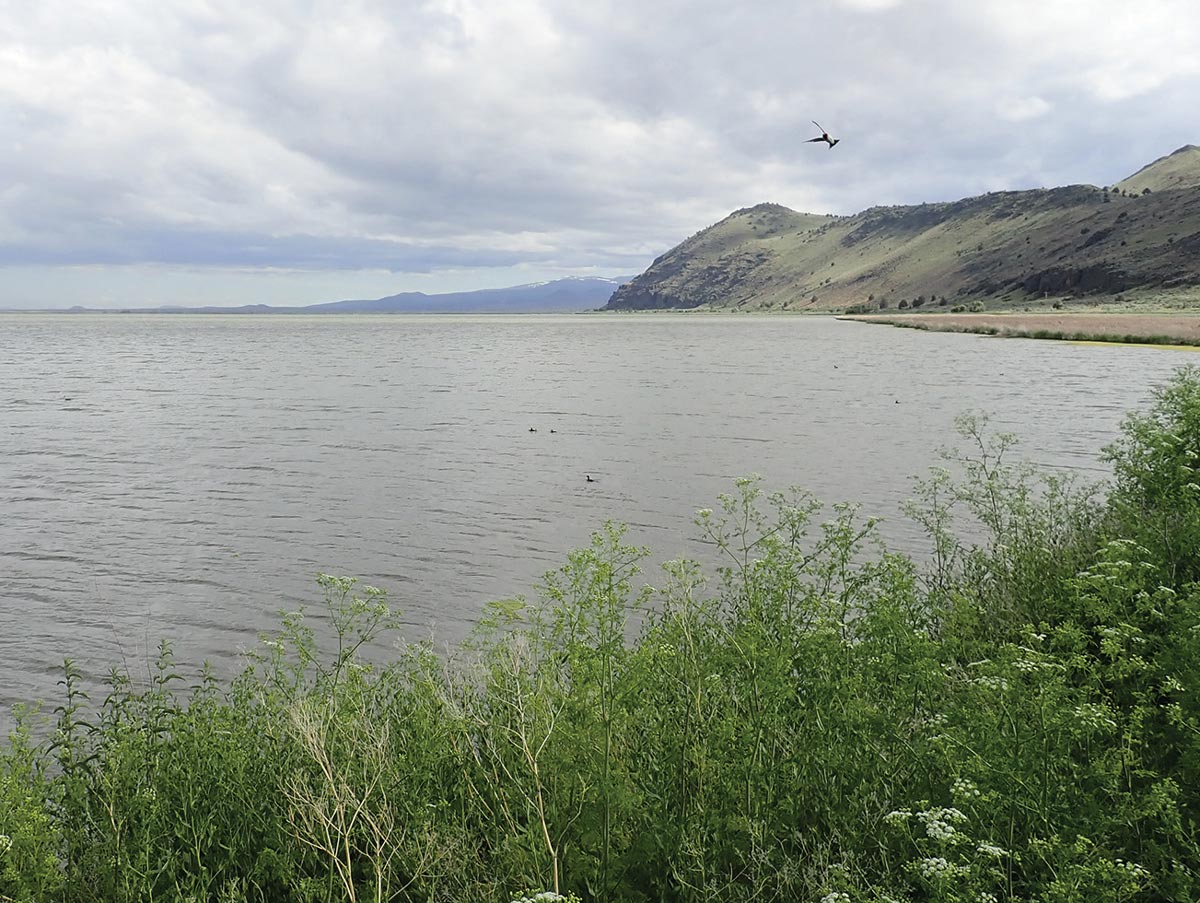
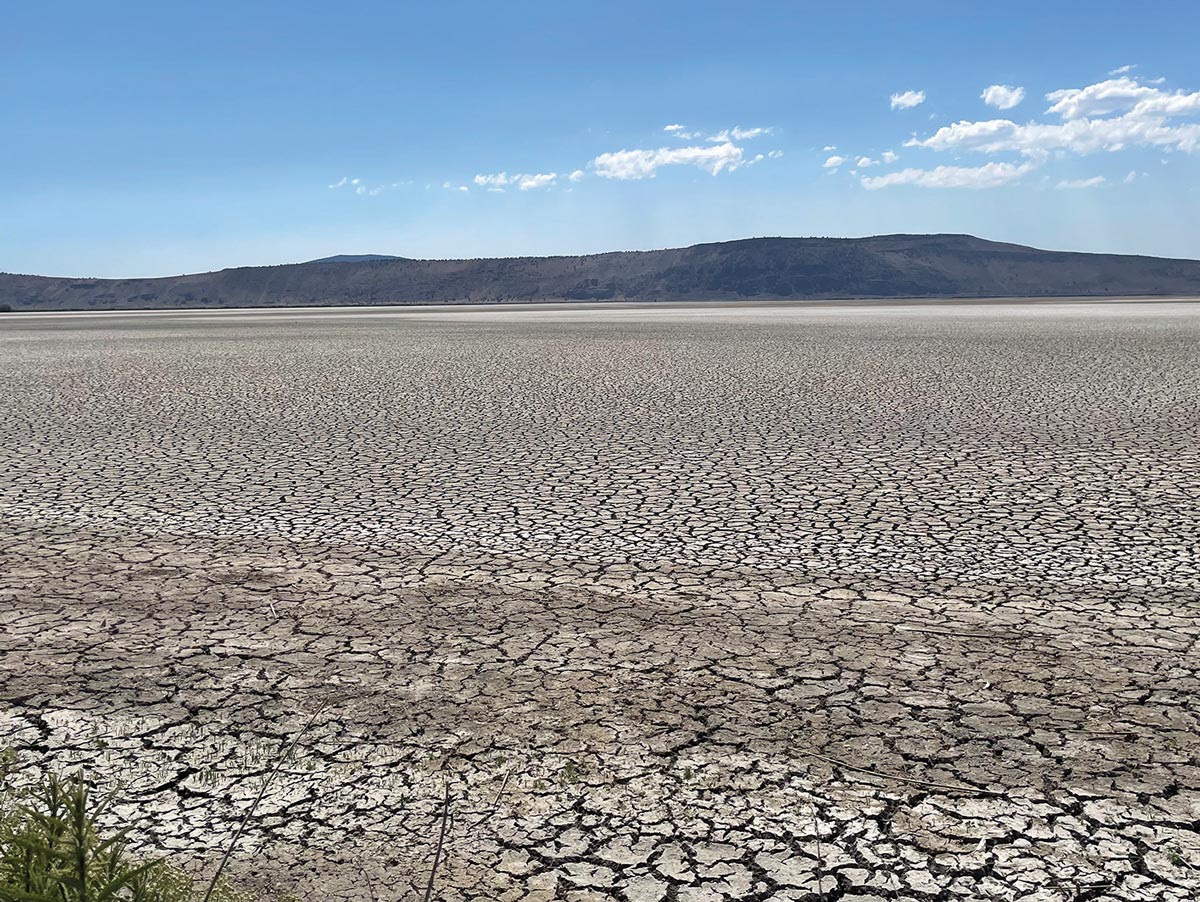
Western Waters
The crown jewels of waterfowl habitat in the American West—the Great Salt Lake, the Klamath River Basin, and the Central Valley of California—are turning into cracked-earth barrens. Years of drought and chronic below-average snowpacks have left vital water supplies at historic lows. The Great Salt Lake declined to its lowest level ever recorded in 2022.
For the first time in their history, Lower Klamath and Tule Lake National Wildlife Refuges will be dry in fall 2022. In California’s Central Valley, limited water supplies forced a 60% reduction in rice acreage in 2022, which traditionally provides crucial habitat for over 5 million wintering ducks. In all three regions, the effects of drought are exacerbated by rigid local water laws and over-allocation of limited water supplies that restrict sufficient water deliveries to waterfowl and waterbird habitats.
Policies that create efficient water-sharing solutions are desperately needed if waterfowl and waterbird populations are to avoid drastic declines across the American West.
